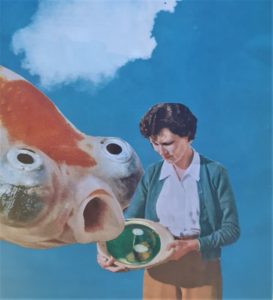We’re in a time where the use of queer imagery and ideas in media are still used for shock factor, and queerbaiting is used as a marketing scheme for both television and advertising.
This lack of authentic queer content has caused a sort of phenomenon of queering the media we observe as queer people applying queer theory to everything from film and literature to music. Non-queer-identified musicians become queer icons; non-queer characters are theorized as queer.
Everyone relates to the media they consume in some form—it’s what makes it endearing and entertaining. With queering perspectives, we relate our own queer experiences to media that has non-queer roots. We come to see queer aspects within it.

When I listen to Joni Mitchell or Angel Olsen, I can see my own queer romantic feelings paralleled in their songs. It makes the songs intoxicatingly queer to my perception, regardless of them not being specifically queer.
Others may see characters on television or in literature, recognize themselves in those characters, and theorize them as queer in an otherwise straight landscape.
When we see queer media, it’s often in dark or dismal contexts. One of the first LGBT movies I saw as a young teen was Boys Don’t Cry, a heartbreaking (and misrepresented, but that’s for another article) film about a trans man in a transphobic Nebraska. It didn’t exactly give me hope or comfort.
We need to question if media featuring queer contexts has been created for a queer audience, for shock factor, or to satisfy a diversity quota.
Queerbaiting is used as a strategy by producers to increase their viewership by attracting queer audiences, hinting at queer situations without continuing the storyline or doing the work to accurately represent and respect queer identities. It is seen throughout television especially, and multiple retail companies, including Calvin Klein in a promotional video released in May of this year, now use it to promote themselves.
This kind of artificial capitalization on queer identities is not only taking away from authentic queer media (media made for and by queer individuals) but is also harmful to the LGBT+ community overall. It objectifies queer experience and culture.
